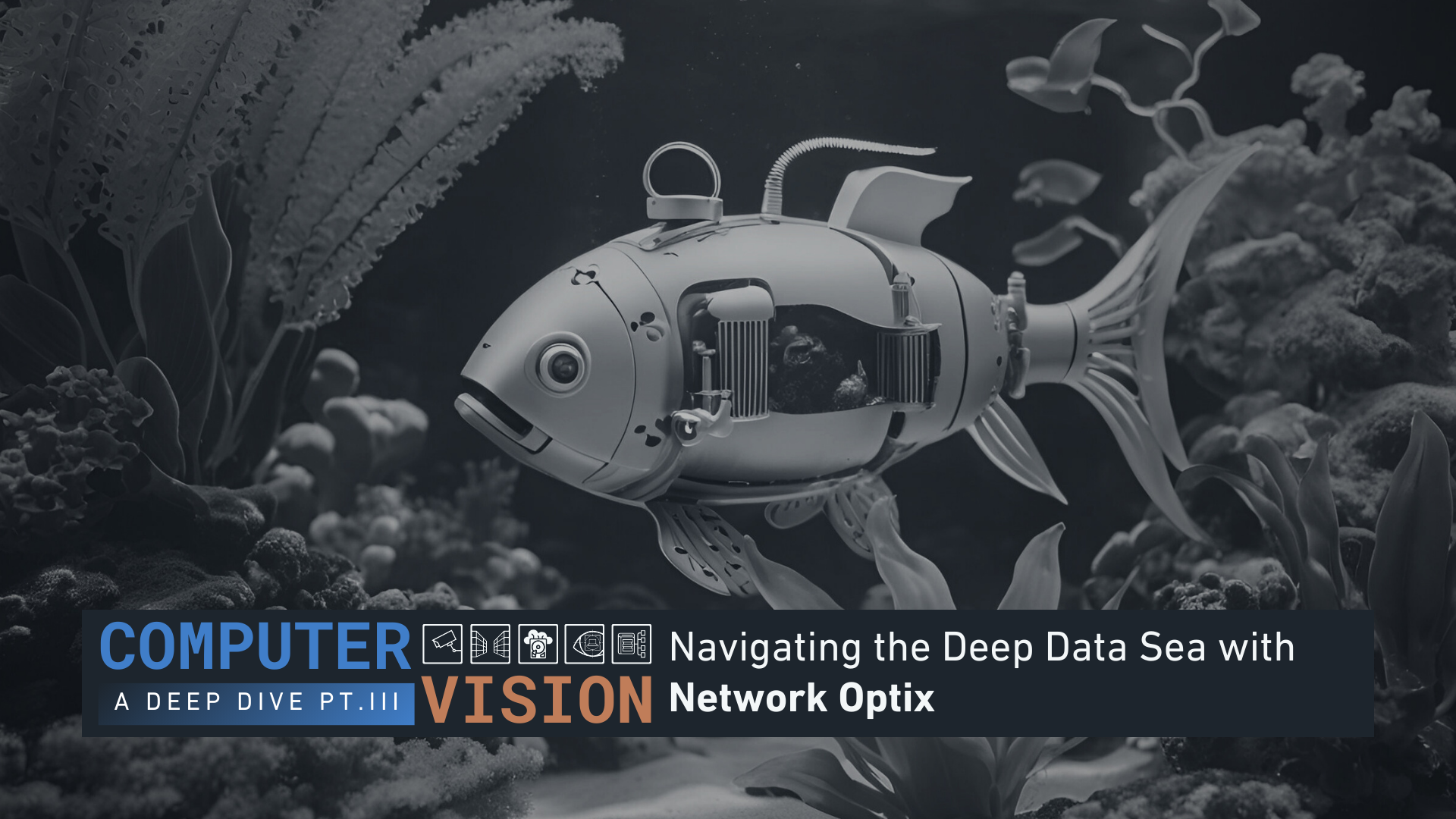Navigating the Deep (Data) Sea: A Monthly Look at Computer Vision with Network Optix
Welcome to our new monthly blog series, where we look toward the future of video intelligence by exploring hypothetical applications of computer vision and Nx EVOS! Each month, we'll dive into a unique use case that showcases the the limitless possibilities these technologies have to offer.
This month, we're diving into the vast and uncharted waters of marine navigation, exploring how computer vision AI and Nx EVOS can unlock new possibilities in deep (data) sea exploration.
Enhancing Marine Navigation with Computer Vision and Nx EVOS
We know more about the worlds and stars around us than we do about the oceans on our own planet — and for good reason. From hidden obstacles and unpredictable weather to the mysteries of the deep, navigating the oceans is a uniquely challenging task. However, with the rise of computer vision, we’re entering a new golden age of exploration. This study explores how integrating computer vision and AI plugins with Network Optix's Nx EVOS platform can revitalize deep-sea exploration, enabling autonomous operations that rival unmanned probes exploring distant planets.
Challenges Beneath the Surface
The deep ocean is one of the last frontiers on Earth, largely unexplored and filled with unknowns. Traditional exploration tools like sonar and radar only scratch the surface - literally - leaving much of the underwater world hidden from our view. Navigating these depths presents unique challenges, from avoiding submerged obstacles to contending with extreme pressure and darkness. Even with the best tools available, human error and limited visibility can lead to costly and dangerous mistakes.
How Computer Vision Lights up the Dark
Imagine a fleet of autonomous vessels, each equipped with cameras that can continuously monitor their surroundings without human intervention. These vessels don’t just capture images; they process data in real time, identifying underwater formations, detecting marine life, and navigating complex terrains. Computer vision enables these vessels to see and understand their environment in ways that traditional sensors can’t, providing a crucial advantage in deep-sea exploration.
In the depths where the light barely penetrates and traditional manned vessels might falter, specialized computer vision systems can still function, detecting subtle changes in the environment that might signal a potential hazard or a brand new discovery. This technology not only enhances the safety of explorers but also opens new possibilities for exploration, allowing us to venture deeper and learn more than ever before.
Nx EVOS: Powering Autonomous Exploration
Network Optix’s Nx EVOS platform takes this possibility to the next level. As a platform that allows you to add and manage multiple AI plugins to process video stream data, the piloting of unmanned deep-sea vessels is greatly simplified. By acting as the eyes for these autonomous vessels, Nx EVOS ensures that all visual data is processed, analyzed, and acted upon efficiently.
With Nx EVOS, operators - whether onshore or aboard a vessel - can monitor every camera feed, overlaying AI-generated insights that highlight potential points of interest or danger. On top of that, due to its highly customizable nature, these systems can be designed to operate autonomously. And because Nx EVOS is scalable, it can support everything from a single research vessel to a fleet of autonomous explorers, allowing the technology to grow alongside the mission.
Autonomous Deep-Sea Missions
Just as space agencies deploy unmanned probes to distant planets, we can now send autonomous vessels into the deep ocean, equipped with computer vision and Nx EVOS, to explore and gather data. These vessels can map the ocean floor, study marine ecosystems, and even search for signs of life in previously unreachable places, all without direct human involvement. Imagine a vessel diving to the ocean’s depths, navigating treacherous underwater landscapes while capturing high-definition video and analyzing it in real time. This isn’t just science fiction - it’s the future of ocean exploration, enabling us to uncover the mysteries of the deep without ever getting our feet wet.
The Deep Ocean: A Frontier from Afar
For those of us fascinated by the ocean but content to admire it from a distance, this potential technology offers the perfect solution. Like sending a probe to space, autonomous vessels equipped with computer vision built upon the Nx EVOS platform can explore the ocean’s most remote and inhospitable areas. They can safely navigate through complex environments, capturing data that broadens our understanding of the marine world.
By combining the power of Nx EVOS and computer vision AI with marine navigation, we can redefine what’s possible in deep-sea exploration. Autonomous vessels equipped with these technologies can safely explore the ocean's depths, uncovering discoveries once beyond our reach and revealing a world that is as fascinating as it is uncharted.


